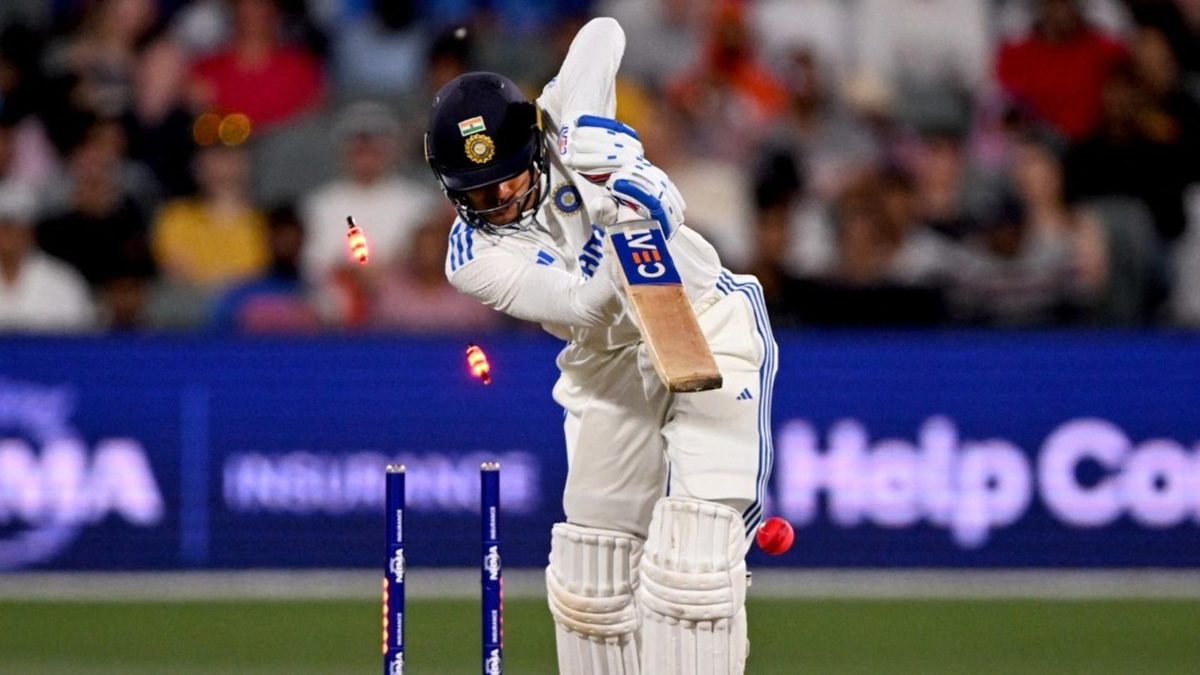
Shubman Gill has plenty of talent, as was seen in Gabba four years ago, but India must expect more from their No.3, writes Sarah Waris.
“Gill ko toh runs ki bilkul hi nahi hai bhookh [Gill has no hunger for runs at all].”
Former Pakistan batter Basit Ali was scathing in his criticism of Shubman Gill after his dismissal for a single run at the Gabba, falling to a full ball outside the off stump from Mitchell Starc. India’s No.3 took the bait and played a hard drive, only to see it nestle in the hands of Mitchell Marsh at gully. India 6-2.
It was the same venue, where nearly four years ago, Gill had left the cricketing world mesmerised with a fine 91 that set up the chase in a monumental series win. Most of the headlines that broke the news after his knock revolved around different placings of the words ‘Gill’ and ‘future’. Having already earned plenty of praise from Virat Kohli even before his Test debut, the Australia series, where he ended with 259 runs in six innings, set him up nicely.
31 Tests later, Gill averages 35.76, his journey being marked by flashes of brilliance and bouts of inconsistency. Interestingly, that innings in Brisbane also remains the last time he scored more than 40 in a Test match outside Asia. He has played 12 matches away from the subcontinent in the format, averaging 26.30. But remove his runs Down Under in his maiden series, it plummets to a shocking 17.80.
More than the lack of runs, that he has struggled to string together a big knock is more concerning. In 10 out of 16 innings since the Gabba heist in 2021 outside Asia, he has scored below 20 on 10 out of 16 occasions. Unlike KL Rahul, whose Test average of 34.58 belies several knocks under pressure, Gill’s returns have been wrought by consistently low scores.
To be fair, not all of Gill's innings outside Asia have been lacklustre. He has shown glimpses of his potential in challenging conditions, such as his innings in Adelaide recently or in Cape Town at the start of the year. On a “challenging, tricky” wicket which saw the Proteas bowled out for just 55, Gill, walking out in the third over, made a crucial 55-ball 36, becoming one of three batters in the India innings to get to double-digits.
During the day-night Test in Adelaide, Gill’s 31 and 28 in the two innings, the latter coming at nearly run-a-ball, showcased his temperament. Gill had played with the pink ball only once before, against England in 2021, and adapting to its demands is a skill still being honed by the veterans. Gill had looked comfortable before failing to defend well.
The underlying problem, though, lies in his inability to carry on after getting set. For a team like India, whose middle order has been struggling in recent years, Gill’s role becomes even more critical. His starts are valuable, but he needs to convert those into match-defining scores.
As a No. 3 batter, Gill also occupies a position that has historically been associated with resilience and grit. While it is unfair to expect him to replicate the methods of a Rahul Dravid or Cheteshwar Pujara - players known for their ability to grind out bowlers and take body blows - certain aspects of their approach remain integral to succeeding in this role. Blunting the new ball and laying a solid foundation for the middle order is as much a part of Gill's job as playing his natural attacking game.
The Punjab batter has faced 3,080 balls in 57 innings thus far, or roughly 54 balls every time he walks out to bat. The number falls to 38 balls outside Asia. It is a far cry from what his predecessor Pujara faced, playing out approximately 92 balls per innings. Away from Asia, the number was 85 balls per innings, not a major dip. Although Pujara’s average of 31.90 overseas was a point of contention, he tired out the bowlers, with Josh Hazlewood famously speaking about the frustration of having to bowl to a well-set Pujara. Pujara’s batting approach had its naysayers but it played a big role in several of India’s famous wins away from home.
The importance of occupying the crease by the top-order batters was emphasised by Steve Smith during the Gabba Test. The former skipper combined with Travis Head to take the scorecard from 75-3 to 316-4 in the first innings, but he attributed their success to the top three batters facing more than 45 balls each, setting a platform for the middle and lower order as they ended with 445. For India, the second innings at Perth was the turning point as Rahul and Yashasvi Jaiswal fought it out for 63 overs to make 201 on a wicket known for its bounce and pace. It just shows how crucial a role the top order plays, especially in alien conditions against a strong bowling attack. And Gill will need to step up.
While he is not solely responsible for India's batting woes, the team’s fortunes can improve significantly if he capitalises on his starts. Once he gets his eye in, the onus is on him to carry on and ensure his innings have an impact.
Currently, there are also several candidates to replace Gill, a specialist batter, in the XI. Dhruv Jurel, who was arguably the best batter against pace during the A games ahead of the series, can play in the middle-order, with Rohit Sharma being pushed up. They can also look to play Washington Sundar, who offers an all-round option. It will provide India with six bowling options and deepen the batting to No.8. By not making the most of his chances, Gill is only increasing the pressure on himself.
Gill’s elegance and technique have drawn comparisons with some of the best in the game but what he needs is to bridge the gap between potential and performance and prove that he has the hunger for big runs, living up to the reputation he had once carved when he started out.
Follow Wisden for all cricket updates, including live scores, match stats, quizzes and more. Stay up to date with the latest cricket news, player updates, team standings, match highlights, video analysis and live match odds.








